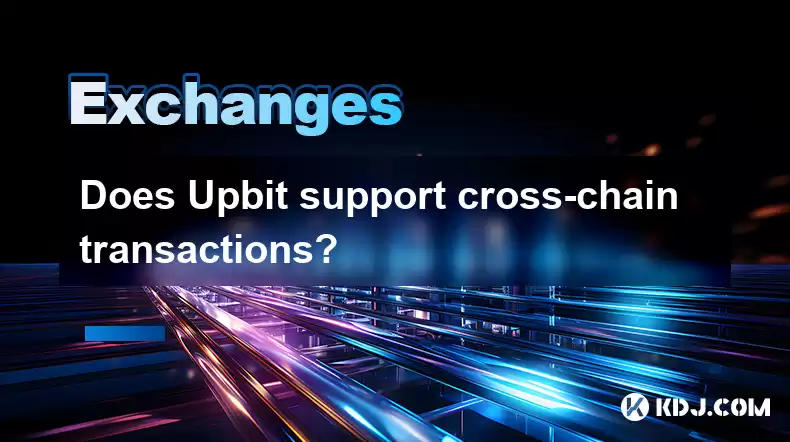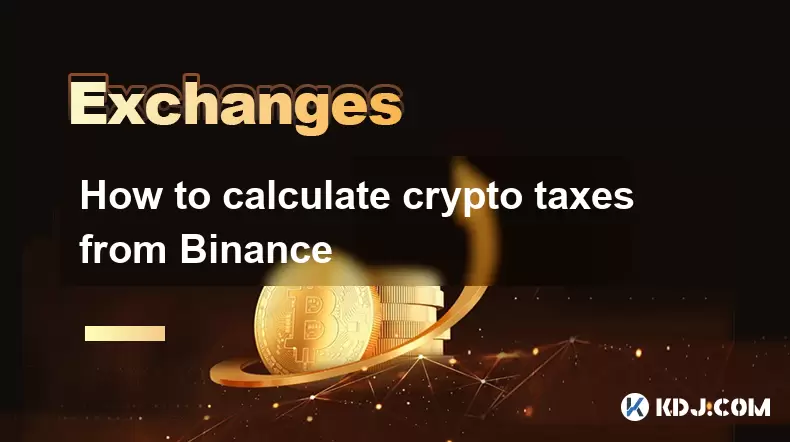-
 Bitcoin
Bitcoin $117500
2.15% -
 Ethereum
Ethereum $3911
6.19% -
 XRP
XRP $3.316
10.79% -
 Tether USDt
Tether USDt $1.000
0.01% -
 BNB
BNB $787.2
2.24% -
 Solana
Solana $175.2
4.15% -
 USDC
USDC $0.9999
0.00% -
 Dogecoin
Dogecoin $0.2225
8.40% -
 TRON
TRON $0.3383
0.28% -
 Cardano
Cardano $0.7868
6.02% -
 Stellar
Stellar $0.4382
9.34% -
 Hyperliquid
Hyperliquid $40.92
7.56% -
 Sui
Sui $3.764
7.63% -
 Chainlink
Chainlink $18.48
10.66% -
 Bitcoin Cash
Bitcoin Cash $582.1
1.88% -
 Hedera
Hedera $0.2601
6.30% -
 Avalanche
Avalanche $23.33
4.94% -
 Ethena USDe
Ethena USDe $1.001
0.02% -
 Litecoin
Litecoin $122.3
2.04% -
 UNUS SED LEO
UNUS SED LEO $8.969
-0.27% -
 Toncoin
Toncoin $3.339
0.86% -
 Shiba Inu
Shiba Inu $0.00001287
4.30% -
 Uniswap
Uniswap $10.43
7.38% -
 Polkadot
Polkadot $3.861
5.08% -
 Dai
Dai $1.000
0.02% -
 Bitget Token
Bitget Token $4.513
3.41% -
 Monero
Monero $267.7
-6.18% -
 Cronos
Cronos $0.1499
4.14% -
 Pepe
Pepe $0.00001110
5.15% -
 Aave
Aave $284.9
8.28%
Does Upbit support cross-chain transactions?
Upbit does not support direct cross-chain transactions, but users can achieve this through external wallets and bridges, though it involves fees and security risks.
Apr 19, 2025 at 08:21 pm

Does Upbit support cross-chain transactions?
Upbit, one of the leading cryptocurrency exchanges in South Korea, has garnered significant attention from traders and investors alike. A common question among users is whether Upbit supports cross-chain transactions. Cross-chain transactions refer to the process of transferring assets from one blockchain to another, enabling interoperability between different networks. This article will delve into the specifics of Upbit's capabilities regarding cross-chain transactions, exploring the features, processes, and limitations involved.
What are Cross-Chain Transactions?
Cross-chain transactions are essential for enhancing the interoperability between different blockchain networks. They allow users to transfer assets seamlessly across blockchains, which can be particularly useful for those looking to leverage the strengths of multiple networks. For instance, a user might want to move assets from Ethereum to Binance Smart Chain to take advantage of lower transaction fees or faster processing times.
Upbit's Stance on Cross-Chain Transactions
As of the latest information available, Upbit does not directly support cross-chain transactions. This means that users cannot directly transfer assets from one blockchain to another within the Upbit platform. However, this does not imply that users are entirely restricted from achieving cross-chain transfers; there are alternative methods to accomplish this.
Alternative Methods for Cross-Chain Transactions on Upbit
While Upbit does not offer native support for cross-chain transactions, users can still execute these transfers through a series of steps involving external platforms and wallets. Here's how you can perform a cross-chain transaction using Upbit:
Withdraw assets from Upbit: First, you need to withdraw your assets from Upbit to an external wallet that supports the blockchain of the asset you wish to transfer. For example, if you want to move Ethereum (ETH) to Binance Smart Chain (BSC), you would withdraw your ETH to a wallet like MetaMask.
Use a cross-chain bridge: Once your assets are in an external wallet, you can use a cross-chain bridge service to transfer your assets to the desired blockchain. Services like Anyswap, Multichain (formerly Anyswap), and other similar platforms can facilitate this transfer. For instance, you could use Multichain to convert your ETH to Wrapped ETH (WETH) on BSC.
Deposit assets back to Upbit: After successfully transferring your assets to the new blockchain, you can deposit them back into Upbit if the exchange supports the new asset type. For example, if you converted ETH to WETH on BSC, you can deposit WETH into Upbit if it is supported.
Limitations and Considerations
When using alternative methods for cross-chain transactions, there are several limitations and considerations to keep in mind:
Transaction fees: Each step in the process, from withdrawing to using a cross-chain bridge and depositing back, incurs transaction fees. These fees can add up and should be considered when planning your transfers.
Security risks: Using external wallets and cross-chain bridges introduces additional security risks. It's crucial to use reputable services and secure your private keys properly.
Time and complexity: The process of executing a cross-chain transaction can be time-consuming and complex, requiring multiple steps and interactions with different platforms.
Asset support: Not all assets are supported on every blockchain, and Upbit may not support all the assets you wish to transfer. Always check the asset support on both the blockchain and Upbit before attempting a transfer.
User Experience and Feedback
Many Upbit users have expressed a desire for native support for cross-chain transactions to simplify the process. The current workaround, while effective, can be cumbersome and may deter some users from engaging in cross-chain activities. User feedback on forums and social media often highlights the need for a more streamlined approach to cross-chain transfers, which could enhance the overall user experience on Upbit.
Technical Aspects of Cross-Chain Transactions
Understanding the technical aspects of cross-chain transactions can provide further insight into why Upbit may not yet support them natively. Cross-chain transactions often involve complex protocols and smart contracts to ensure the security and integrity of the transfers. Implementing such systems requires significant technical resources and infrastructure, which may explain Upbit's current stance.
Examples of Cross-Chain Transactions
To illustrate the concept of cross-chain transactions, consider the following examples:
ETH to BSC: A user wants to transfer ETH from Ethereum to BSC to take advantage of lower transaction fees. They withdraw ETH from Upbit to MetaMask, use a bridge like Multichain to convert ETH to WETH on BSC, and then deposit WETH back into Upbit if supported.
BTC to Liquid Network: A user wants to move Bitcoin (BTC) to the Liquid Network for faster and more private transactions. They withdraw BTC from Upbit to a Bitcoin wallet, use a service like Blockstream's Liquid Network bridge to transfer BTC to L-BTC, and then deposit L-BTC back into Upbit if supported.
Frequently Asked Questions
Q: Can I perform a cross-chain transaction directly on Upbit?
A: No, Upbit does not currently support direct cross-chain transactions. You will need to use external wallets and cross-chain bridges to achieve this.
Q: Are there any fees associated with cross-chain transactions on Upbit?
A: Yes, there are fees associated with each step of the process, including withdrawal fees from Upbit, bridge fees, and deposit fees back into Upbit.
Q: How secure are cross-chain transactions using external platforms?
A: The security of cross-chain transactions depends on the reputation and reliability of the external platforms used. It's essential to use well-known and trusted services and to secure your private keys diligently.
Q: What should I do if Upbit does not support the asset I want to transfer to after a cross-chain transaction?
A: If Upbit does not support the asset you wish to transfer to, you will need to either find another exchange that supports it or hold the asset in an external wallet until it becomes supported on Upbit.
Disclaimer:info@kdj.com
The information provided is not trading advice. kdj.com does not assume any responsibility for any investments made based on the information provided in this article. Cryptocurrencies are highly volatile and it is highly recommended that you invest with caution after thorough research!
If you believe that the content used on this website infringes your copyright, please contact us immediately (info@kdj.com) and we will delete it promptly.
- Tron's Sell-Off Spurs Altcoin Shift: What's Next for TRX?
- 2025-08-08 08:30:12
- RUVI Presale: Is the Growth Potential Real?
- 2025-08-08 09:10:12
- Sleep Token's US Takeover: Thornhill Rides the 'Even In Arcadia' Wave
- 2025-08-08 08:30:12
- FTT Token's Wild Ride: Creditor Repayments vs. Market Drop - A New Yorker's Take
- 2025-08-08 07:10:12
- Floki Crypto Price Prediction: Riding the Robinhood Rocket or Just a Meme?
- 2025-08-08 07:15:12
- EigenLayer, Restaking, and Ethereum: Navigating the Hype and the Hazards
- 2025-08-08 06:30:12
Related knowledge

How to use margin trading on Poloniex
Aug 08,2025 at 09:50am
Understanding Margin Trading on Poloniex

How to use advanced trading on Gemini
Aug 08,2025 at 04:07am
Understanding Advanced Trading on GeminiAdvanced trading on Gemini refers to a suite of tools and order types designed for experienced traders who wan...

How to deposit USD on Bitstamp
Aug 07,2025 at 05:18pm
Understanding Bitstamp and USD DepositsBitstamp is one of the longest-standing cryptocurrency exchanges in the industry, offering users the ability to...

How to use the Kraken Pro interface
Aug 08,2025 at 09:57am
Understanding the Kraken Pro Interface LayoutThe Kraken Pro interface is designed for both novice and experienced traders seeking a streamlined experi...

How to find my transaction ID on Gemini
Aug 08,2025 at 12:50am
Understanding the Transaction ID in Cryptocurrency ExchangesA transaction ID (TXID) is a unique alphanumeric string that identifies a specific transfe...

How to calculate crypto taxes from Binance
Aug 08,2025 at 07:56am
Understanding Cryptocurrency Taxation on BinanceCalculating crypto taxes from Binance requires a clear understanding of how tax authorities classify d...

How to use margin trading on Poloniex
Aug 08,2025 at 09:50am
Understanding Margin Trading on Poloniex

How to use advanced trading on Gemini
Aug 08,2025 at 04:07am
Understanding Advanced Trading on GeminiAdvanced trading on Gemini refers to a suite of tools and order types designed for experienced traders who wan...

How to deposit USD on Bitstamp
Aug 07,2025 at 05:18pm
Understanding Bitstamp and USD DepositsBitstamp is one of the longest-standing cryptocurrency exchanges in the industry, offering users the ability to...

How to use the Kraken Pro interface
Aug 08,2025 at 09:57am
Understanding the Kraken Pro Interface LayoutThe Kraken Pro interface is designed for both novice and experienced traders seeking a streamlined experi...

How to find my transaction ID on Gemini
Aug 08,2025 at 12:50am
Understanding the Transaction ID in Cryptocurrency ExchangesA transaction ID (TXID) is a unique alphanumeric string that identifies a specific transfe...

How to calculate crypto taxes from Binance
Aug 08,2025 at 07:56am
Understanding Cryptocurrency Taxation on BinanceCalculating crypto taxes from Binance requires a clear understanding of how tax authorities classify d...
See all articles

























































































